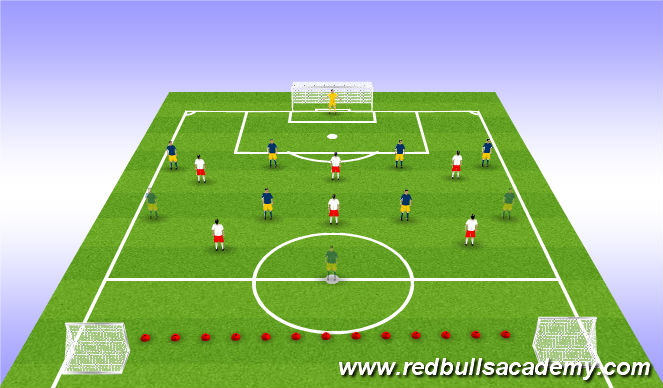

In Belgium, an emerging European football power, with a terrific recent track record in developing elite players, they vary somewhat by preferring 5 v 5 (“single diamond”), then 8 v 8 (“double diamond”) and ultimately 11 v 11 approaches. Nations vary between playing 4 v 4 or 5 v 5 at the youngest age groups.
#Tactical soccer ball full#
They base their game formats around the same building-blocks of 7 v 7, then 9 vĩ, before youth players graduate to the full 11 v 11 adult-sized game. In England, Holland, Germany, Italy, France and Spain –Ĭonsidered to be the most powerful and successful European football nations – Mind is now being asked to think beyond his own decision-making, and take intoĪccount the players around him and away from him – something that needs Will be new to this type of training so patience is needed. Should not be completed before 12 to 14 years old. Understanding that these small parts make up the overall tactical performance ofĮxplicit tactical training sessions involving the whole team Team tactics, we can zoom in on both group and individual tactics, When we discuss tactics, it is the whole team that we tend to focus on. Watching games and analysing formations, systems of play, styles of play, etc. Team tactics is the tactical method we understand most from Supporting the ball, and attempting to work out what might happen next. Made by others have consequences for them. Brighter players will further understand that the decisions This age, with players able to grasp that an action they make, has an effect on The principles of cause and effect can be understood more at This may be the relationship between partners (forĮxample, two centre-backs or two strikers), their unit (defence, midfield,Īttack) or between members of other units that affect each other (for example Theįocus here is on the relationship between individuals that occupy similar The coach can begin to work on small group or unit tactics. Once technique and individual football tactics are learntĪnd mastered, and as the players age, they can start to have a greater focus around Principles that a player learns in order to make the best decisions during a The Grassroots coaching section of theįIFA website, although needing a significant update, summarizes these “simple Young player’s individual tactics and decision-making, the stronger he will fit To support a teammate who is in possession, and communicating to ask for the In a wider sense, individual tacticsĬan relate to decision-making around whether to dribble, pass, shoot, etc., how

They usually relate to a player’s decisions and performance when 1 v 1 againstĪ direct opponent, both in possession (1 v 1 attacking) and out of possession Tactics are those employed by players when they are on or in close proximity to the ball. Towards their mid to late-teens – team tactics. Moving through group or unit tactical understanding, and ultimately then – Young players must first understand individual tactics, before Rotating players positionally, rather than pigeon-holing them early, will help For example, 4 v 4 or 5 v 5 games canīe used to teach all players basic concepts of attacking and defending. They can be taught without using uncontrollable jargon and without Tactics can be taught to younger players, but in an implicit
#Tactical soccer ball professional#
Information comes from the European Club Association’s Report on YouthĪge Professional Clubs Begin Tactical Work: Club Of the most renowned academies in Europe begin their tactical training. Giving complex tactical information to a 10-year-old, considering the traits ofĪ child at this age, is not productive. Tactical training as young players progress through their development, so Without this technical development and subsequent skill development,Ĭarrying out tactical work is extremely difficult. The coaching focus when working with younger players is on

It is also fundamental to recall how we can use the implicit and explicit teaching methodsįrom chapter 3. Reading this chapter, to remember the key stages in the development of youth football

“ It is not a question of 4-4-2 or 4-2-1-3, it is a question of having a team which is ordered, in which the players are connected to one another, which moves together, as if it was a single player.” (Arrigo Sacchi) Click on the Cover to Learn more Understanding the Tactical Development of Football Players


 0 kommentar(er)
0 kommentar(er)
